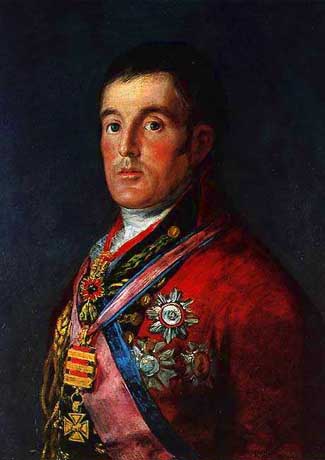|
|||
|
Philatelia.Net / Bonapart / Plots / The directory «Plots of stamps in the catalogue»Wellington Arthur Wellesley, Duke of (1769-1852)Perhaps the most famous soldier, other than Napoleon Bonaparte, to come out of the era was Arthur Wellesley. Wellesley learnt his military trade in India applying his study of the art of war, brought on by the ineptitude of his fellow officers, to practical matters in India. In 1799 he led a division at Seringapatum, made mistakes, but went on to win the battles of Argaum (1803) and Assaye (1803) when in command. A careful leader, he tried to limit casualties and became a master of the reverse-slope tactic - keeping his forces screened from artillery fire behind the brow of a hill. After his Indian service he became the Member of Parliament for Rye, then Mitchell, then Newport. Between 1807 and 1809 he was Chief Secretary for Ireland, where his Anglo-Irish family had estates, but again led a division in the campaign for Copenhagen. Made a Lieutenant-General in 1808, he went to Portugal to support that country's fight against Bonaparte. His first contact with the French was at Obidos, then the battle of Rolica ended with his enemy retreating to Vimiero where, despite being reinforced by the main French army of General Junot, it was defeated. Wellesley's newly appointed commanders - Sir Harry Burrard and Sir Hew Dalrymple - shamed the British army by negotiating the Convention of Cintra, which allowed repatriation of Junot's army, with equipment - and on British ships - to the safety of France. Wellesley emerged unscathed from the inquiry that followed and celebrated his return to the Peninsula with the audacious capture of Oporto, via a hazardous river crossing, from Marshal Soult. Invading French-occupied Spain, Wellesley sought to assist Spanish forces against the French but, despite their lack of backbone, managed to win the Battle of Talavera for which he was given a viscountcy. He became an earl in February 1812, a marquess in October of the same year and the Duke of Wellington in May 1814. Winning the battle of Bussaco, Wellington withdrew behind a formidable defensive barrier known as the Lines of Torres Vedras. Rested and eager for battle, the British then moved on to the offensive winning the battle of Fuentes de Onoro. Belgium, 1990, Battle of Waterloo British Indian Ocean Territory, 2010, Wellington at the Battle of Waterloo Dominica, 1977, Wellington's Victory Dubai, 1967, Duke of Wellington Gibraltar, 1971, Wellington monument Gibraltar, 1971, Wellington monument Great Britain, 2009, Battles of Wellington Guinea, 2012, Paintings of 1812 Isle of Man, 2000, Ensign Caesar Bakon and Duke of Wellington, Battle of Waterloo Paraguay, 1969, Duke of Wellington St. Helena Island, 1980, The Briars St. Helena Island, 1980, Wellington Togo, 1978, Duke of Wellington Tristan da Cunha, 2011, Arthur Wellington Belgium, 1990.06.16, France, 1974.04.27—28, Great Britain, 1990.06.18, Advertising: |
|||
© 2003-2025 Dmitry Karasyuk. Idea, preparation, drawing up
|

